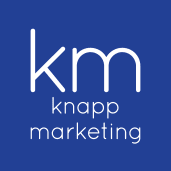This article was co-authored by Mary K Young of Zeughauser Group and originally appeared on Bloomberg BNA’s Big Law Business blog.
Just before Thanksgiving, Greentarget and Zeughauser Group released their 5th annual State of Digital and Content Marketing report. This year’s survey included responses from 181 in-house counsel (IHC) about their use of social media and law firm–generated content. For the second year in a row, the report included results of a separate survey of 81 law firm CMOs.
The CMO survey indicates that law firms will throw more dollars and manpower in the coming year to produce and disseminate more content. The IHC survey indicates a declining satisfaction with law firm content and provides some clear direction for how law firms and lawyers can better reach this key audience.
The IHC survey, particularly taken in the context of the previous four surveys, yields five clear takeaways for firms as they make their 2016 social media plans. The full survey is worth your attention, but here’s what we thought shouldn’t be missed.
- LinkedIn Rules. For the fifth year in a row, General Counsel of all ages affirm their use of LinkedIn – to enhance their own careers, to keep in touch with outside counsel and to get their business and professional news. 68% of IHC have used LinkedIn for professional purposes in the last week, up from 62% last year. Their top reasons for visiting, in order, are professional networking with colleagues, connecting with outside counsel and getting professional and business news.
While a majority of attorneys within large firms have a LinkedIn profile, in our experience very few of those profiles are robust or up-to-date. And an adequate profile is just remedial use of LinkedIn. We know IHCs are looking at the profiles—why not make your profile at least as strong as your firm bio? The Holy Grail – sharing valuable, interesting and targeted content – is virtually unknown outside of the firm marketing department. (Unfortunately, the marketing people aren’t typically the ones with IHC connections.) Given how important sharing content on social media has become, the gap between how outside and IHC use LinkedIn is now big enough to drive a truck through.
To do in 2016: Drive your firm into that gap. Take advantage of sluggish social media adoption by competitors and give IHC what they are looking for: valuable content and informative profiles.
- Figure out what good content means and start producing it. Up until recently, law firm blogs and law firm content have been viewed as essentially the same thing. And in keeping with the social media-driven power of content marketing, law firms have jumped onto the blog bandwagon with both feet. A recent LexBlog survey claims that the number of blogs in the Am Law 200 rose from 250 in 2010 to nearly 1000 today.
Let’s be clear: the number of potential readers hasn’t changed much from 2010, but the competition is at least four times greater; likely much more when you consider that the explosion of legal content extends far beyond the Am Law 200.
In this year’s survey, IHC responses indicate that readership of blogs has plateaued (at a still high 65%), that the number of IHC who rate firm blogs as somewhat or very credible dropped by 10 percentage points, and the percent of respondents who can envision a future when a high-profile blog would influence hiring decisions continued a slow two-year slide to 38%. While none of this is a vote of no confidence, it none-the-less appears that IHC are taking advantage of other competing sources of content.
The CMO survey indicates that 98% of firms engage in content marketing, 87% are investing in blogs in 2015(up from 81% in 2014), and a majority intend to increase their spend and emphasis on content marketing in 2016. It would appear that law firms intend to produce more of what IHC are liking less – revealing an obvious opportunity to break through the noise by delivering content in new ways that reach IHC, including LinkedIn.
To do for 2016: Think strategically about what clients want to read (possibly not another dry case review), teach your lawyers what it means to write like a corporate journalist not a brief writer and start producing a lot better content as opposed to a lot more content. Survey authors at Greentarget stress the importance of having a written content strategy in achieving better content that supports the firm’s strategic goals and market opportunities.
- Content may be King, but your blog is not the castle. Here’s a conundrum for you. You as a lawyer produce content. You publish it on your blog. Then, the firm shares your content through paid sources like Lexology and JDSupra and unpaid aggregators like LinkedIn. Only 7% of IHC rate that content on your firm blog as very credible. On a legal content aggregator like JDSupra, 40% of IHC rate your content as very credible. And on LinkedIn, 24% of IHCfind that content to be very credible.
It’s not logical, but there it is: Your content is more credible on JDSupra, Lexology and LinkedIn than on your own blog.
To do in 2016: Park your content on your blog for many good reasons like SEO, your subscribers and the firm’s credibility. But if you aren’t taking that extra step of sharing on social networks and content aggregators, then you are missing the very readers and credibility you sought in the first place.
As a notable aside, IHC rated law firm Client Alerts (77%) and practice group newsletters (76%) as the two most valuable sources of law firm generated content. Good old email can’t be beat when the information is timely and targeted. But don’t forget to publish that content in other ways–JDSupra, Lexology and LinkedIn (and your blog).
- Don’t cancel the PR program. IHC seem to have a complicated relationship with law firm blogs (see numbers two and three below) but they are clear about traditional mainstream media: The Wall Street Journal still corners the market on street cred. The shrinking of traditional media in the past decade has opened up a great opportunity for the rise of corporate journalism, but in the minds of clients, it is not as credible. That said, a robust social media program attracts the attention of journalists in search of stories.
To do in 2016: Keep the PR people on the payroll and reporters on speed dial.
- Twitter and Facebook get the nod. Slowly but surely Twitter and Facebook are gaining ground with IHC for business purposes. It’s still not high, but now 14% of IHC regularly go to Twitter for their business news, up from 2% in 2012. Facebook shows up at 24%.
To do in 2016: Get Hootsuite, ClearView Social or a similar tool that makes posting to multiple social media platforms simple and quick. Then share your content across platforms. Spend some time on LinkedIn, Twitter and Facebook so that you can participate intelligently.


